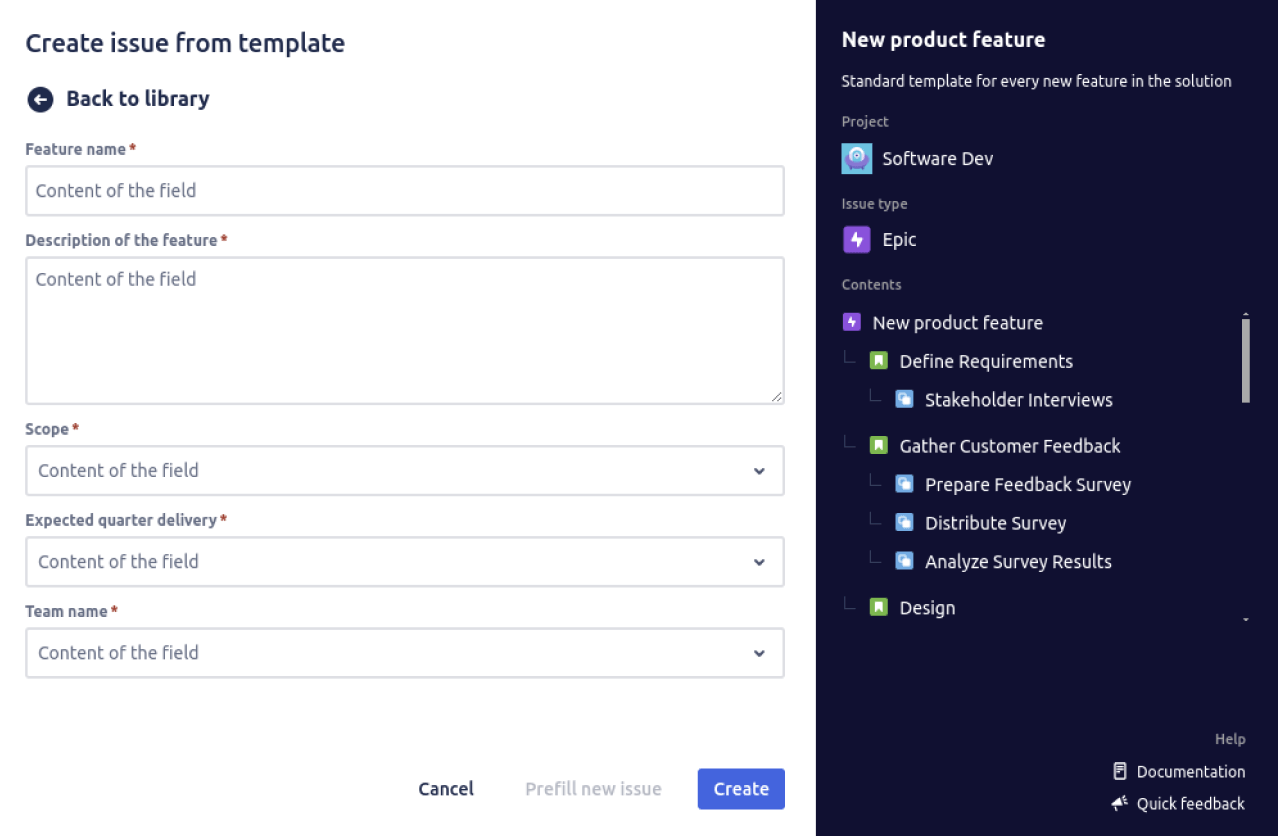You have undoubtedly encountered Jira Task Templates and Jira Issue Types when using Jira for project management.
Which one, though, ought to you use?
Knowing the distinction between the two will help you organize your work and ensure your team works as efficiently as possible. Let’s examine what each has to offer and decide which best suits the requirements of your project.
Jira Issue Types
Jira Issue Types help categorize and differentiate between various work items, such as bugs, features, and tasks. Each Issue Type has its fields and workflows tailored to the specific needs of the issue. This categorization helps track progress, manage workflows, and generate reports specific to each type of work.
Think of issue types as the different kinds of work you do. They’re like labels. You stick to tasks to categorize them. Jira comes with some default ones like “Bug,” “Story,” and “Task,” but you can create your own too. So, if you’re a developer, you might have issue types for “Feature,” “Bug,” and “Tech Debt.”
What’s a Jira Task Template?
A Jira task template is like a pre-filled form for a specific type of task. It’s a shortcut to creating new tasks, saving time, and ensuring consistency. By setting up a template, you can predefine task details, checklists, and subtasks you regularly use. This saves time and reduces errors, as you won’t need to recreate these elements from scratch each time.
For instance, if you’re a project manager, you might have a task template for “Daily Standup,” which automatically includes fields for what you did yesterday, what you’re doing today, and any blockers.
Which One Should You Choose?
The choice between Jira Task Templates and Jira Issue Types depends on your needs. Jira Task Templates are your best bet if your main goal is to streamline repetitive tasks and ensure consistency. They offer a way to automate and simplify the creation of tasks that follow a set pattern, improving efficiency.
On the other hand, Jira Issue Types will be more beneficial if you need to categorize and manage different types of work. They provide a structured way to handle various aspects of your project, ensuring that each type of work is tracked and managed appropriately.
The Final Words
Jira Task Templates and Jira Issue Types serve distinct purposes and can significantly enhance project management processes. Jira Task Templates are ideal for repetitive tasks and ensuring consistency, while Jira Issue Types are essential for categorizing and managing diverse work items. By understanding the strengths of each, you can tailor your Jira setup to fit your team’s workflow and project requirements better.
So, next time you’re setting up your Jira environment, consider how these tools can create a more organized and efficient project management system.



